Alabaster vs. Marble
How They Differ and What Makes Each Unique
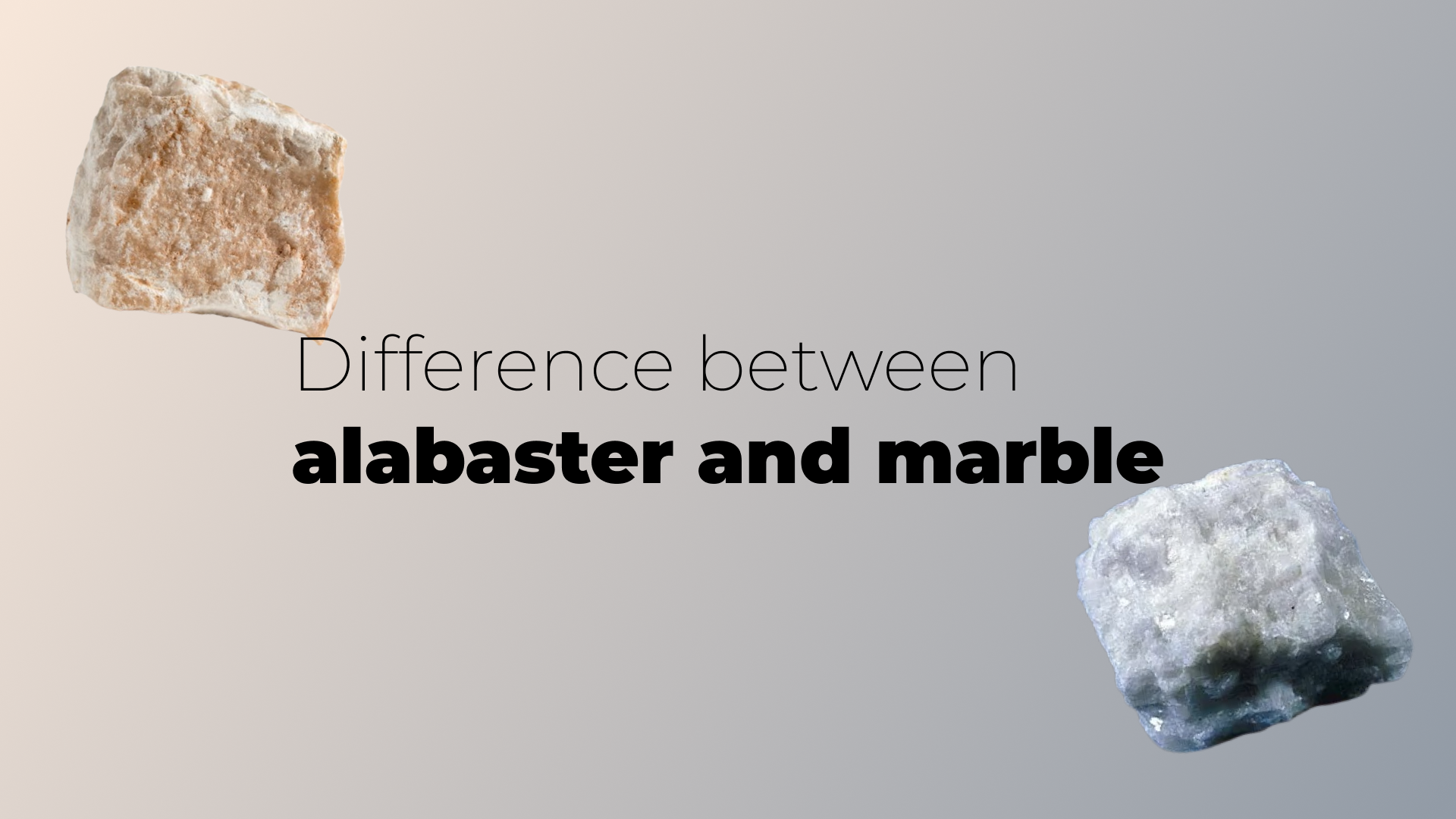
When it comes to choosing the perfect lighting for your home, material selection plays a pivotal role. Among the many options, alabaster lights and marble lights stand out for their elegance and timeless beauty. But which one should you choose? What makes them unique, and how do they compare? Whether you’re renovating your living room, dining area, or looking for a statement piece for your bedroom, understanding the key differences between alabaster and marble will help you make a well-informed decision for your home.
Both alabaster and marble are natural stones that have been used in art, architecture, and design for centuries. They offer distinct aesthetic qualities and benefits that make them suitable for various interior styles. Alabaster lighting has a soft, translucent glow that creates a warm and inviting atmosphere, while marble lighting tends to offer a more dramatic and sophisticated appearance. But how do these materials compare in terms of durability, texture, and overall style?
In this blog, we’ll explore the differences between alabaster lights and marble lights, examine their unique characteristics, and help you determine which one might be the best choice for your space. From texture and maintenance to design possibilities, here’s everything you need to know before making your decision.
What is Alabaster?
Alabaster is a soft, fine-grained sedimentary rock that has been cherished for centuries for its translucent beauty and ability to be easily carved into intricate shapes. Traditionally, alabaster is used in sculptures, carvings, and various decorative items. When used in lighting fixtures, it adds a warm, inviting glow that is ideal for creating a relaxed, luxurious atmosphere.
Alabaster’s translucent nature allows light to pass through it, creating a soft, diffused effect that is often seen in alabaster lighting fixtures such as lamps, sconces, and chandeliers. The material comes in various shades, ranging from pure white to creamy beige and even pink hues, making it a versatile choice for different interior styles.
Key Characteristics of Alabaster
- Translucence: Alabaster has a unique ability to let light pass through, making it perfect for light fixtures that require a soft, ambient glow.
- Softness: Ranking at 2 on the Mohs hardness scale, alabaster is relatively soft and easy to carve, which is why it’s often used in sculptures.
- Color Variety: While it is often white, alabaster can come in various colors such as pink, yellow, and brown, adding to its appeal in decor.
- Texture: The fine-grained texture of alabaster gives it a smooth and elegant appearance, ideal for refined designs.
- Fragility: Due to its softness, alabaster is more prone to scratching and damage than harder stones like marble.
- Workability: It is easy to carve and shape, which makes it ideal for detailed and intricate designs in lighting fixtures.
- Warmth: Alabaster lights emit a warm, inviting glow, enhancing the comfort and elegance of living spaces.
- Sustainability: Being a natural stone, alabaster is eco-friendly when sourced responsibly.
- Luxurious Feel: The glowing light from alabaster fixtures adds a touch of luxury to any space.
- Versatility: Alabaster lighting works well in various settings, from cozy bedrooms to sophisticated living rooms.
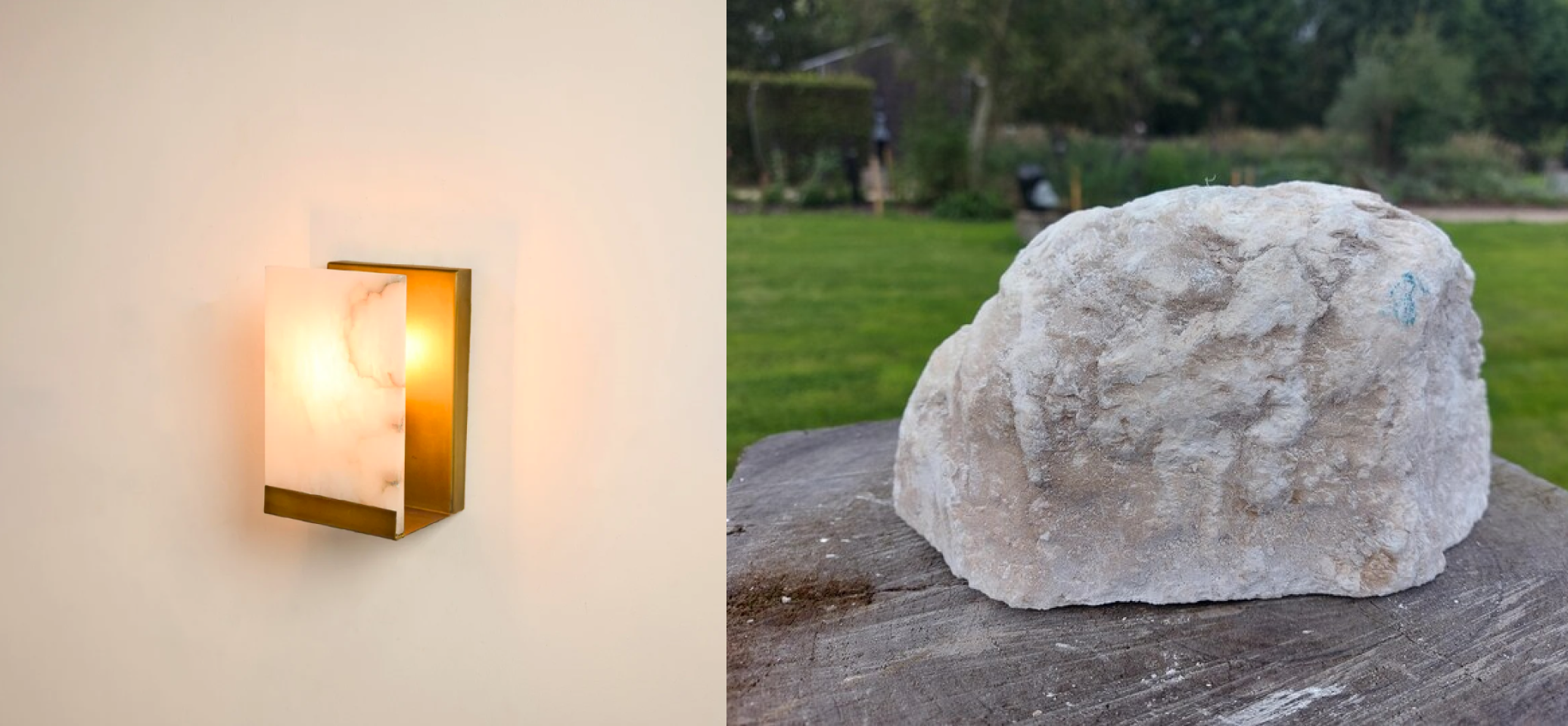
What is Marble?
Marble is a metamorphic rock formed from limestone under intense heat and pressure. Known for its durability and luxurious appearance, marble features striking veins of color that add elegance to its surface. Unlike alabaster, marble lacks translucency but is admired for its versatility in applications like flooring, countertops, and sculptures.
When used in lighting fixtures, marble provides a sense of weight and grandeur, often serving as the base or structural component in floor lamps, table lamps, and chandeliers. Its solid, polished finish elevates the luxury of any space, making it a prime choice for those seeking both style and durability.
Key Characteristics of Marble
- Hardness: Marble is significantly harder than alabaster, ranking around 3 to 4 on the Mohs scale, making it more resistant to scratching and wear.
- Veining Patterns: Marble's unique veins and swirls make each piece one-of-a-kind, adding visual interest and sophistication.
- Color Variations: Marble is available in a wide array of colors, such as pure white, green, pink, black, and even blue, offering flexibility in design.
- Polishability: Marble can be polished to a high gloss, enhancing its natural beauty and making it a popular choice for premium finishes.
- Cool Touch: Marble stays cool to the touch, making it an excellent material for countertops and flooring, particularly in warmer climates.
- Durability: More durable than alabaster, marble is ideal for high-traffic areas, as it resists wear and tear over time.
- Elegance: The polished surface of marble imparts a refined, timeless elegance to any space, often associated with luxury and grandeur.
- Weight: Marble’s density makes it a heavier material, providing stability in lighting fixtures and other applications.
- Heat Resistance: Marble is naturally heat-resistant, making it suitable for installations like fireplaces and mantels.
- Sculptural Appeal: Marble has been used for centuries in sculptures and artistic works due to its beauty and ease of carving.
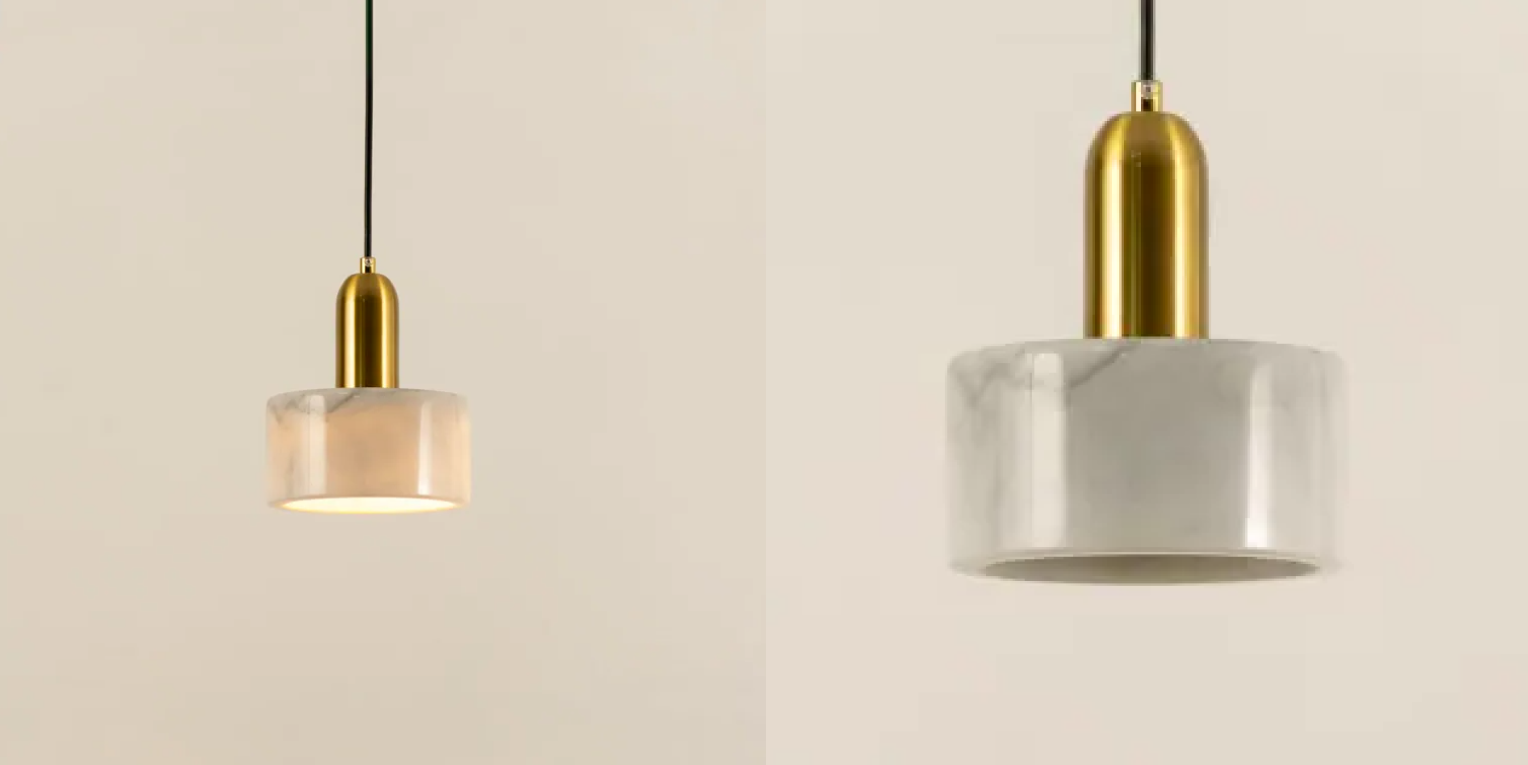
Key Differences Between Alabaster and Marble Lighting
While both alabaster and marble are revered for their elegance and beauty, they offer distinct qualities that make them suitable for different uses. Here’s a comparison to help you understand how they differ in terms of appearance, workability, and durability:
| Feature | Alabaster | Marble |
|---|---|---|
| Hardness | Soft (2 on the Mohs scale) | Hard (3-4 on the Mohs scale) |
| Translucence | Translucent, allows light to pass through | Opaque, does not allow light through |
| Color Variations | White, cream, pink, brown | White, green, pink, black, blue, and more |
| Workability | Easy to carve and shape | Requires skill to carve, but more durable |
| Durability | Less durable, prone to scratching | Highly durable, resistant to wear and tear |
| Weight | Lighter material | Heavier material |
| Heat Resistance | Low resistance | High heat resistance |
| Light Diffusion | Ideal for soft, ambient light | Often used for structural elements in lighting fixtures |
| Ideal Uses | Lamps, sconces, chandeliers | Table lamps, floor lamps, bases for lighting |
| Maintenance | Requires gentle care, prone to damage | Easier to maintain, but can stain or etch |
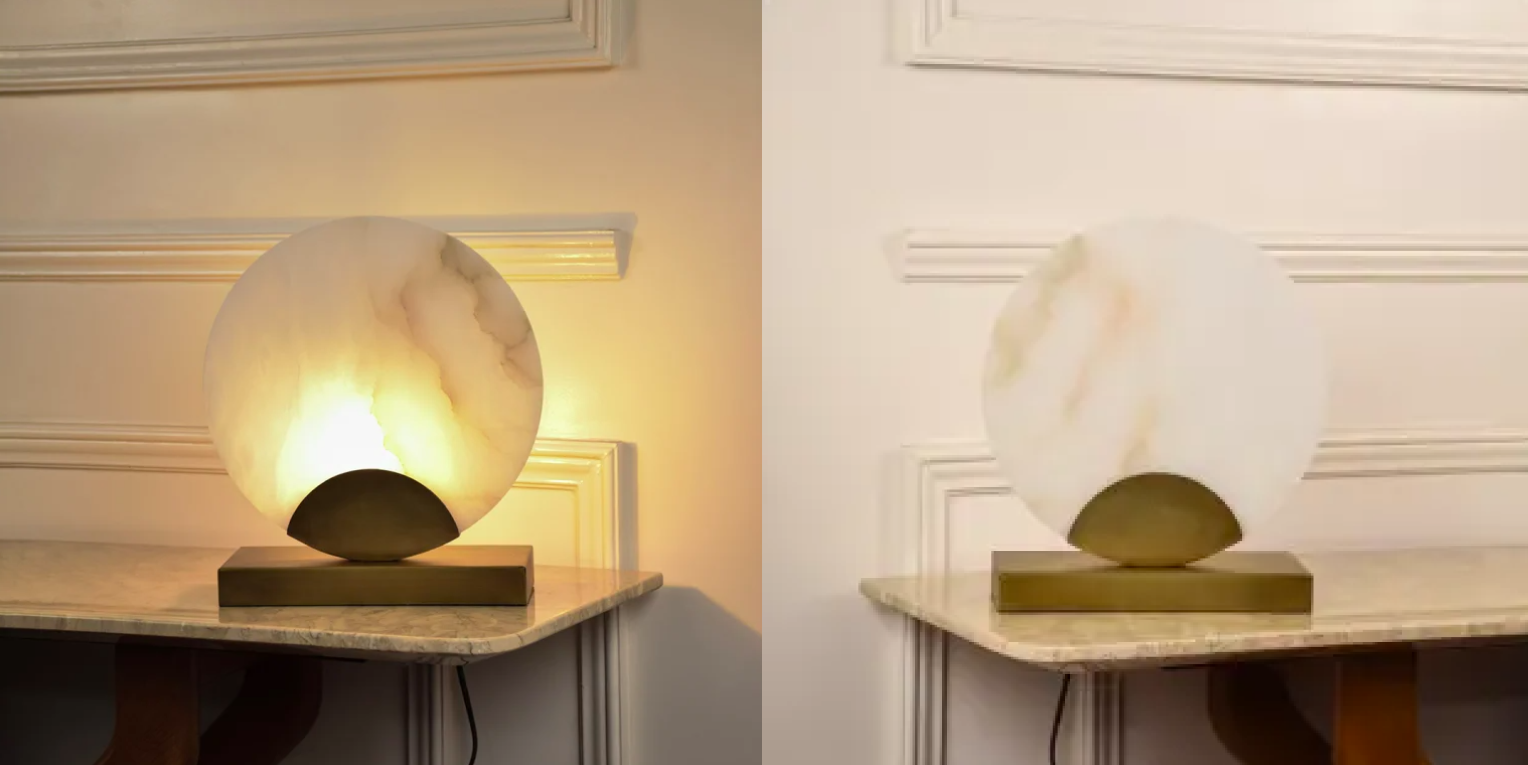
Alabaster Lights vs. Marble Lights - Which One Should You Choose?
Choosing between alabaster lighting and marble lighting depends largely on the atmosphere you wish to create and the specific needs of your space.
Best Uses for Alabaster Lights:
Alabaster lighting is ideal for creating a soft, calming environment with a touch of elegance. If you're looking for lighting fixtures that diffuse light gently and add a warm glow to intimate spaces, alabaster may be the right choice. Its soft and translucent appearance can make any room feel more inviting, making it perfect for bedrooms, lounges, or dining areas.
- Wall sconces and pendant lights to create ambient lighting.
- Chandeliers and table lamps that require a soft, diffused glow.
- Ideal for romantic, cozy spaces like bedrooms and living rooms.
Best Uses for Marble Lights:
Marble lighting, on the other hand, is perfect for those who want to make a bold statement. If you’re looking for a more dramatic and luxurious feel, marble lights are an excellent option. These fixtures are best suited for areas where durability and high contrast are needed, such as large living rooms, kitchens, or entryways. Marble lighting also works well in both modern and traditional interiors, offering timeless appeal.
- Table lamps with marble bases for added elegance and stability.
- Floor lamps with a marble base to make a statement in a large room.
- Large-scale lighting fixtures in entryways and formal spaces.
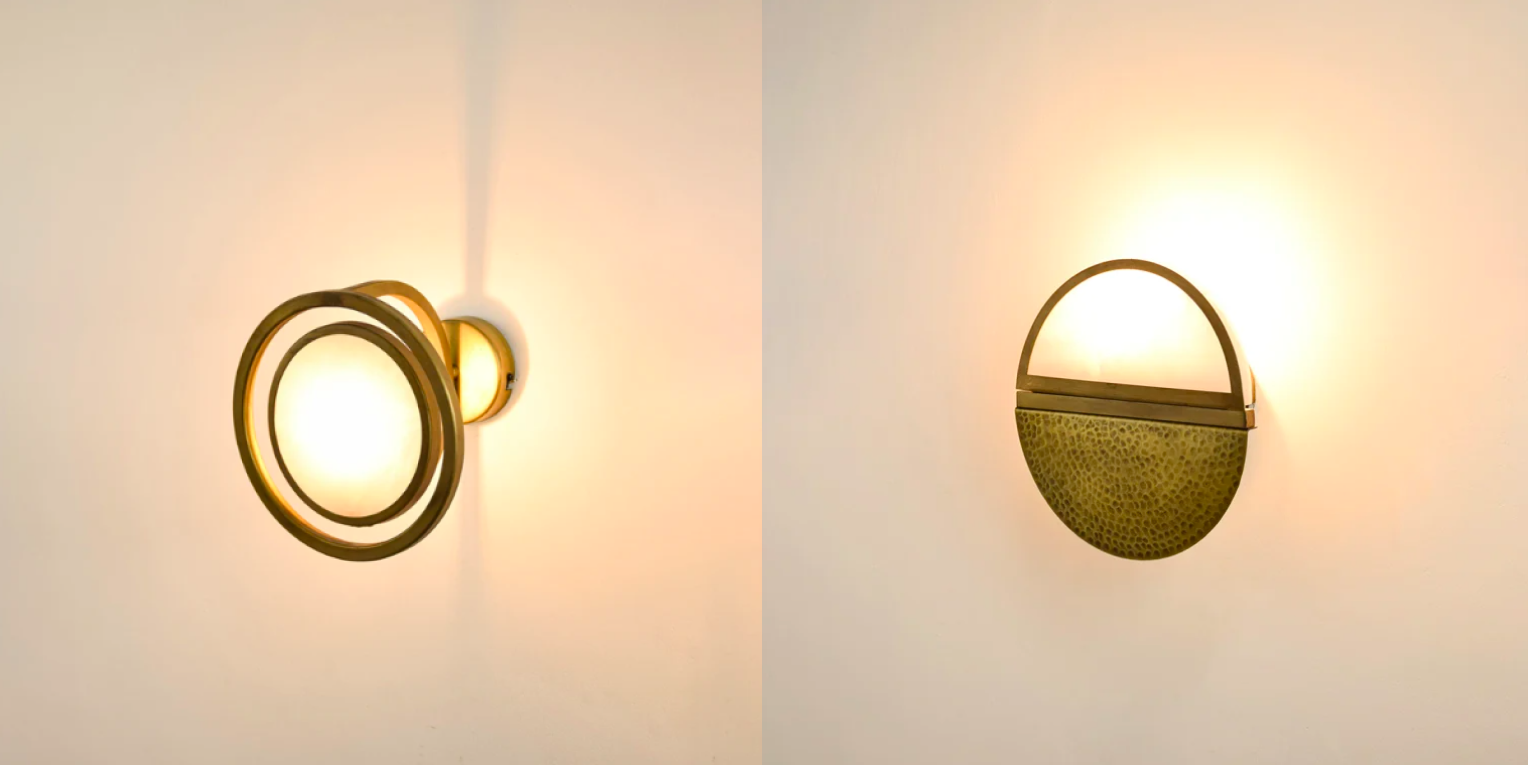
Conclusion: Choose Alabaster or Marble Lighting Based on Your Needs
Both alabaster lights and marble lights bring unique qualities to the table, elevating your home decor with their distinct characteristics. Alabaster’s soft glow and intricate designs are perfect for mood lighting and creating a warm ambiance, while marble’s bold, polished finish offers a statement of luxury and durability. By considering the lighting effect you desire, your room’s function, and how much care each material requires, you can choose the perfect lighting for your home.
Thank you for reading! For feedback or inquiries about our products, feel free to reach out via WhatsApp



